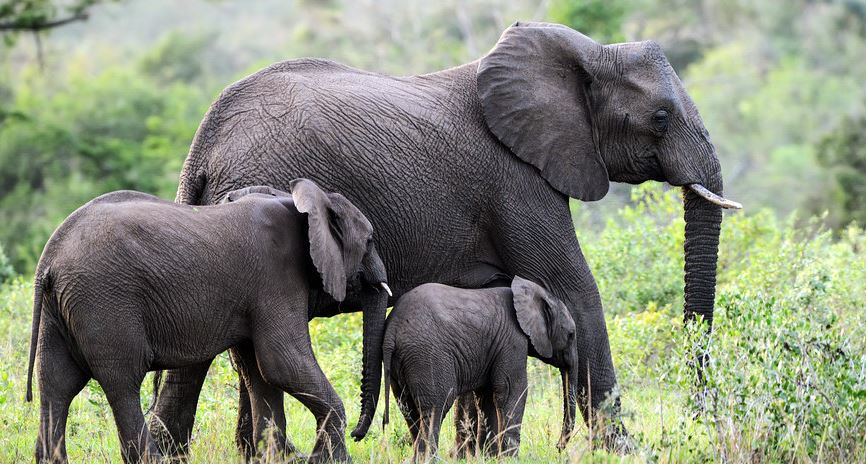7 Facts About African Bush Elephants
7 Facts African Bush Elephants: One of the renowned Big Five species that tourists in Africa are most interested in seeing is the African Bush Elephant, also called the African Savannah Elephant.
The largest land-dwelling mammal in the world is thought to be the African Bush Elephant. Both Asian and African forest elephants are smaller than this variety. It lives in woods, savannah grasslands and woodlands, marshes, and agricultural areas and is found in 37 African countries. The following information on the African Bush Elephant may be of interest to you:
In reality, African Bush Elephants are very gregarious animals that travel and reside in herds made up of cows and their young. Typically called bulls, adult men live alone in small bachelor groups.
The scientific name for African bush elephants is Loxodonta Africana. They are distinguished by their enormous, huge ears, long, curving tusks, and extremely skilled trunk. The tusks of both men and females begin to emerge between the ages of one and three, and they continue to grow throughout life.
Their upper jaws produce tushes, which are deciduous or milk teeth with a pulpal cavity, root, and crown that fully form shortly after birth and from which their tusks emerge. The longest known African bush elephant tusk weighed 117 kg and was 3.51 meters long.
In addition to many other functions, they utilize their trunks for breathing, sniffing, detecting vibrations, massaging their young, sucking up water, and grabbing logs and tree trunks. Their exceptional dexterity is a result of the two opposing extensions/fingers that make up the tip of their trunks.
The African bush elephant has a generation duration of roughly 25 years and a maximum lifetime of 70 to 75 years.

Height and Body weight.
African Bush elephants have a shoulder height of 3.3 meters and a maximum weight of 6000 kg, or around 7 tons. Bulls can grow up to 4 meters tall at the shoulders. When the long-bone epiphyses (the upper portion of the femur bone) are fully developed, which happens in males around age 40 and in females around age 25, elephants reach their maximum height and size.
The African Bush Elephants are herbivorous, as are all elephants in general. Herbs, grass, and creepers make up the majority of their diet. Up to 150 kg of vegetation can be consumed daily by an adult African bush elephant. However, they also eat leaves and bark during the dry season. Tree bark’s high calcium content contributes to the healthy growth of their bones.
In addition, African bush elephants may eat papayas, bananas, guavas, and even the seeds of sugarcane, sorghum, and maize. Additionally, they add minerals from termite mounds and mineral licks to their diet.
The enormous ears of African bush elephants aid in controlling the extra heat brought on by the continent’s intense heat. They converse with each other through their ears as well. In addition to helping them hear noises over great distances, their ears work in tandem with the soles of their feet and trunk. Elephants can typically hear each other’s calls up to four kilometers away. Their hearing can sometimes be enhanced up to ten kilometers distant.
African bush elephant females are in estrus for two to six days after they first ovulate at the age of eleven. Adult females in captivity have a 14–15 week estrous cycle. Bulls in musth, or adult males on heat, travel great distances to find females and congregate with large family groupings. African bush elephants marry during the rainy season. African bush elephants typically give birth to one calf every two to three years, with a gestation period of 22 months.
The IUCN (International Union for Conservation of Nature) Red List has classified the African bush elephant as a vulnerable species. Poaching, the illicit trade in ivory and other body parts, extensive deforestation, and habitat encroachment are some of the reasons endangering their ability to survive in the wild.
Tourists can go on a game drive in any savannah national park in Africa to see the African bush elephant, but the best places to see them are in the following national parks: Lake Mburo National Park in Uganda, Masai Mara National Park in Kenya, Serengeti National Park in Tanzania, Murchison Falls National Park, Queen Elizabeth National Park, Kidepo Valley National Park, and Akagera National Park in Rwanda.
On a wildlife safari, visitors to Uganda, Rwanda, Kenya, and Tanzania can easily spot the African Bush Elephant.



